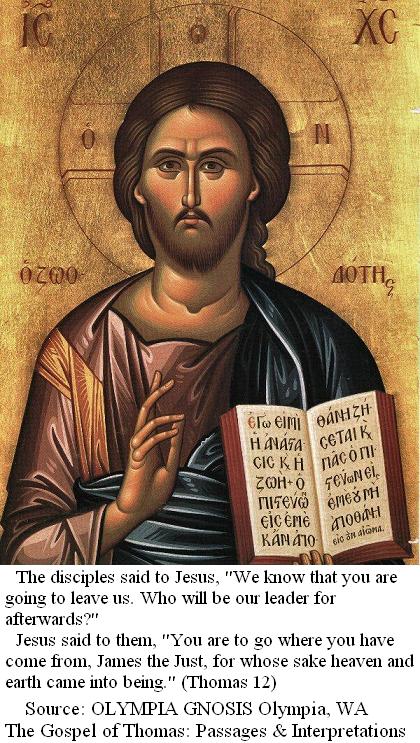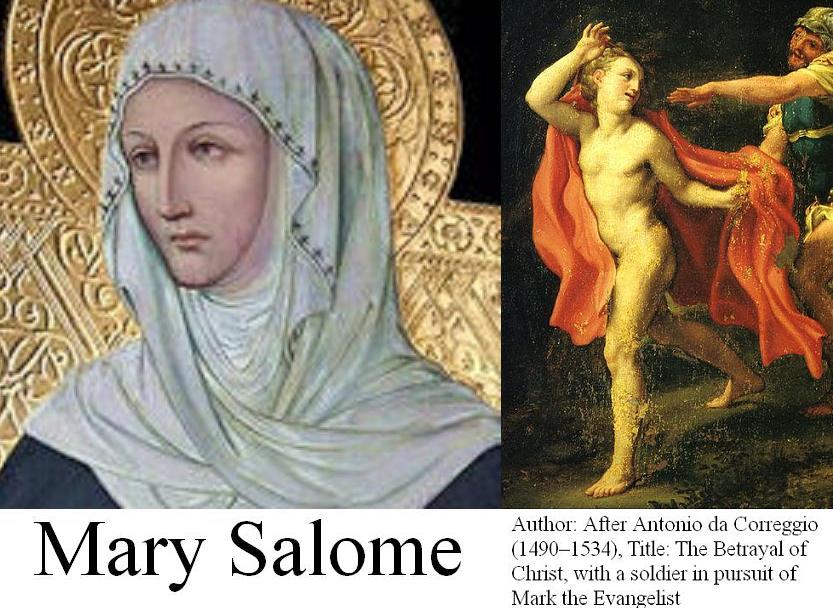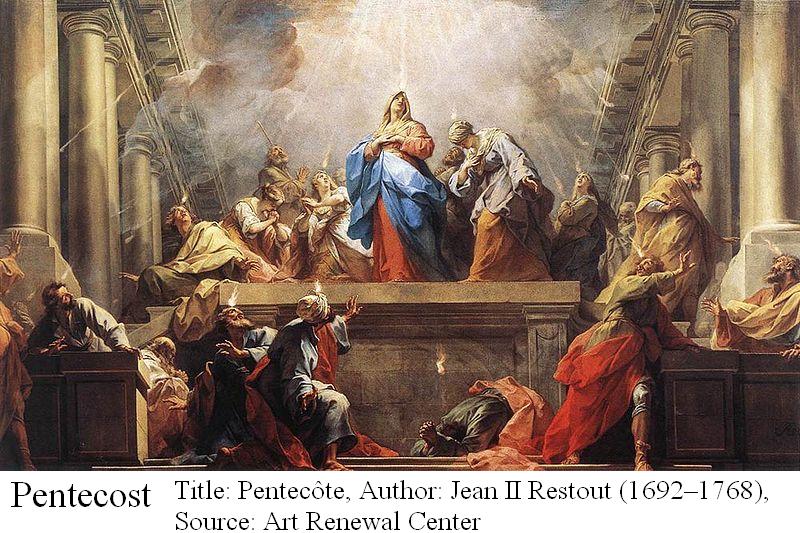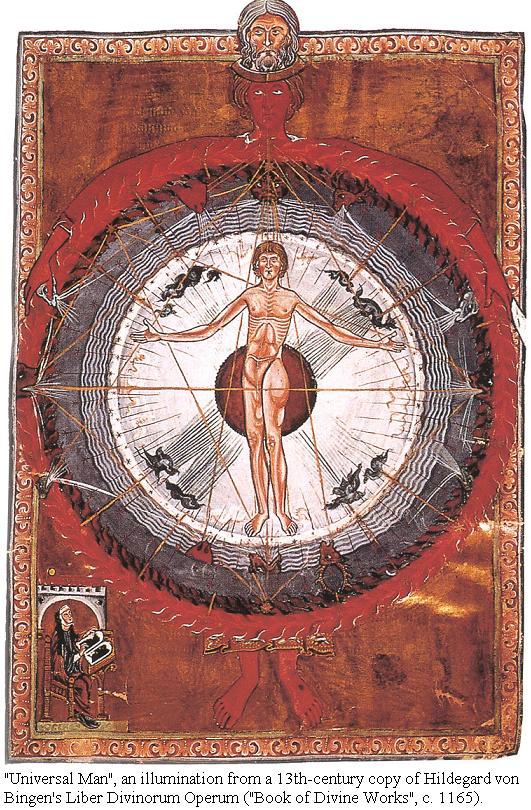|
||||||||
|
|
|
2018-04-12 ArtNo.46246
◆Review:The baptism of the Holy Spirit (Mysteries)
 The disciples said to Jesus, "We know that you are going to leave us. Who will be our leader for afterwards?" Jesus said to them, "You are to go where you have come from, James the Just, for whose sake heaven and earth came into being." (Thomas 12) "Where you have come from" means "the supreme god," not only to raise "James the Just" to the same as "the supreme god" but also says, "For his sake heaven and earth came into being." We can see the era when this phrase was established. ○Pauline theology gave the keynote to the New Testament In the New Testament canon of 27 books, 14 (52%) belong to the Pauline corpus. And even the total number of pages of the Pauline Letters accounts for 31% (127 pages of total 409 pages) of the New Testament in Japanese, which far exceeds the Gospel of Matthew's 12%, the Gospel of Mark's 8%, the Gospel of Luke's 13%, the Gospel of John's 11%, the Apocalypse's 6% and Acts of the Apostles' 13%, according to The SasakuraChristChurch. And with that, these Pauline letters were systematically disseminated from Paul's life time and before the other documents of the New Testament were completed one after another after the Jewish war. As a result, Pauline theology became the keynote of the entire New Testament. ○The Prophecy of Caiaphas  However, when the Jerusalem Church was established at the meeting place of the Essenes adjacent to the residence of the High Priest Caiaphas, barely one and half month after the Crucifixion, Pauline theology might not have existed yet if Paul's career reported today is a historical fact. Anyway, this Primitive Christian Church seems to have been expected to play the role of a new umbrella organization of Orthodox Judaism supervising the church movement of about four million overseas gentile believers and about eight hundred thousand followers of different Jewish factions in the country. At least high priest Caiaphas must have thought so, who had testified at a meeting of the Sanhedrin; "You know nothing at all! You do not realize that it is better for you that one man die for the people than that the whole nation perish. He will die for the Jewish nation, and not only for the nation but also for the scattered children of God, to bring them together and make them one." The Gospel of John adds, "So from that day on they plotted to take his life." (John 11:49-57) Perhaps the plan to set up a large-scale organization for Gentile Jews seems to have been carefully prepared before Jesus began his missionary work. Otherwise, it is impossible that the Gentiles from Parthia, Media, Elam, Mesopotamia, Judea, Cappadocia, Pontus, Asia, Phrygia, Pamphylia, Egypt, Libya, Rome, Crete and Arabia gathered together and about three thousand new believers joined the just-founded Jerusalem Church that day alone. (Acts 2:9-41) ○The choice fell on James the Righteous  At that time, a tidal wave of the church movement, which had occurred spontaneously across the Mediterranean coast, finally reached Jerusalem, the headquarters of Judaism, with the hope that the Savior would come soon based on Daniel's 'Seventy Weeks prophecy' in the Old Testament. With the background of the frequent rebellions based on the 'Seventy Weeks prophecy,' the ruling class such as the high priest, Sanhedrin, Herod royal family, the Roman Governor's office, etc. was nervous about the tidal wave and was under pressure to take some measures. Anyway, Jesus' brother James, who had been the legitimate lineage of the High Priest representing both the Davidic royal family as well as a priestly Aaronic Lineage and had won the high honor of the Righteous, must have been seen by them as just the man for the top of the new organization for supervising overseas' Gentile Jews. According to Epiphanius, a 4th-century Christian writer, James exercised the priesthood on behalf of the Nazarite community, entering into the holy areas of the Temple where only priests could go and functioned as "high priest" to his followers. In other words, James the Righteous seems to have been certified as the legitimate lineage of the High Priest representing both the Davidic royal family as well as a priestly Aaronic Lineage. Around this time, Jesus seems to have often visited the meeting place of the Essenes adjacent to the residence of the High Priest Caiaphas. Salome, the owner of this house, that is, the venue of the Last Supper, had intimate relationship with Jesus (Thomas 61). Thus, the Jesus' loved disciple who had remained leaning back against Jesus and said, "Lord, who is going to betray you?" when Jesus testified, "One of you is going to betray me" at the supper (John 13:25) and a young man, wearing nothing but a linen garment, fled naked, leaving his garment behind, when Jesus was arrested at Gethsemane (Mark 14:51-52) seem to have been the author of the Gospel of Mark himself, the son of Salome.  It is unknown what kind of circumstances there were but all four Gospels say that Jesus' fate of the crucifixion was stated at that time when he was baptized by John the Baptist at the Jordan River. Immediately after this, Jesus made a debut to the religious society of Jerusalem with testimony of John the Baptist in Bethany. (John 1:19-28) Jesus suddenly appeared alone on the banks of the Jordan River and visited John the Baptist and the four Gospels say nothing regarding where Jesus had been or what he had been doing until then. According to the Gospel of John, on the third day, Jesus, who had borrowed a few disciples such as Peter and his younger brother Andrew, John and his elder brother James and had also added Philip and Nathanael as his disciples, participated the wedding in a village called Cana that was about 20 km west of the Lake Galilee together with his mother Mary and his brothers and performed the first of his miraculous signs. He turned the water in six stone water jars, each holding from twenty to thirty gallons, into wine. (John 2:1-11) The bridegroom of this wedding is said to have been Simon the Zealot, who is said to be Jesus' younger brother. It can be seen that Jesus' family also cooperated on Jesus' religious debut. ○Jesus' different instructions Jesus initially instructed his disciples to return to Galilee after his crucifixion. He also told them, "After I have risen, I will go ahead of you into Galilee (Mark 14:28,16:7, Mat 28:7,10)." Therefore, Peter, Thomas, Nathanael, James the Greater and John and two other disciples seem to have returned to Galilee and have met Jesus resurrected. (John 21:1-14)  However, according to the Acts of the Apostles, Jesus gave a new instruction, "Stay in Jerusalem," after the Resurrection. (Acts 1:4) During the forty days after his crucifixion, he appeared to the apostles from time to time and was taken up into the sky while they were watching. When the day of Pentecost came, the Holy Spirit came down and about 3,000 people who witnessed it together with his disciples joined the Jerusalem church which was established on that day. (Acts 2:1-41) The above description of the Acts seems to reflect a change of circumstances that Jesus could not anticipate before his crucifixion. The situation appears to have taken a sudden turn and an agreement to establish the Jerusalem church on the day of Pentecost was reached among the various parties such as the disciples of Jesus, the different groups of overseas' church movement and different Jewish factions in the country. The summary of the agreement can be seen from the Acts of the Apostles' following statement that Jesus ordered after the Resurrection. On one occasion, while he was eating with them, he gave them this command: "Do not leave Jerusalem, but wait for the gift my Father promised, which you have heard me speak about. For John baptized with water, but in a few days you will be baptized with the Holy Spirit." So when they met together, they asked him, "Lord, are you at this time going to restore the kingdom to Israel?" He said to them: "It is not for you to know the times or dates the Father has set by his own authority. But you will receive power when the Holy Spirit comes on you; and you will be my witnesses in Jerusalem, and in all Judea and Samaria, and to the ends of the earth." After he said this, he was taken up before their very eyes, and a cloud hid him from their sight. (Acts 1:4-9) Apparently at that point, "Resurrection," "the Descent of the Holy Spirit," and "Second Coming of Jesus" seem to have been set as the foundation of faith. Later, with the joining of Paul, "Atonement," "Justification by one's faith," and "Faith in Christ not according to the flesh" etc. were also added and the so-called Pauline theology was built. Paul injected his characteristic new meaning different from the Old Testament and the miracle traditions in The New Testament to the concept of "resurrection" through claiming that Christ has been raised from the dead as the first of a great harvest of all who have died (1 Co 15:20) and was made of the seed of David according to the flesh and declared to be the Son of God with power, according to the spirit of holiness, by the resurrection from the dead. (Romans 1:3-4) And regarding baptism, he says, it is the sign that one is baptized into Jesus' death and is raised from the dead together with Jesus. (Romans 6:3-4) ○The teaching transmitted directly from Jesus Jesus himself did not record his teachings. The four Gospels of the New Testament, especially the Gospels of Matthew, Mark and Luke, which are called synoptic gospels, are similar in the story they tell about Jesus. Therefore a hypothesis has been made, there was a written collection of sayings of Jesus called "Q source (derived from the German word 'Quelle')" which was commonly referenced by these writers. It is believed that these authors replenished the Q source with folklore about Jesus at that time. Later, The Gospel of Thomas, the content of which is very similar to Q Source, was found in Coptic manuscripts, which had been discovered in Nag Hammadi on the Upper Nile in 1945. Therefore the hypothesis was virtually proved. Incorporating the folklore is said to be one of the reasons why there are so many miracle traditions in The New Testament. In contrast, there are few miracles in the Gospel of Thomas itself. Besides that, the Gospel of Thomas has been inlaid with extreme contents. Pauline theology, which eliminates the law of Moses and the customs formed the basis of Judaism such as circumcision, looks extreme, while the Gospel of Thomas declares that worship, prayer, fasting and donation are also useless and even denies the Creator, the God of the Old Testament. Instead, it preaches us to live according to the order of the supreme god (propator) inherent in ourselves Although editors of the Synoptic Gospels refrain from introducing such extreme teachings as expected, they rewrite 'supreme god' to 'Holy Spirit' or 'Spirit of truth' and preach "All the sins and blasphemies of men will be forgiven them. But whoever blasphemes against the Holy Spirit will never be forgiven; he is guilty of an eternal sin."(Mark 3:28-30/Mat 12:31-32) So they position the Holy Spirit above the Creator God of the Old Testament. Even James the Less, who performed all the practices enjoined by that rule of life with rigorous exactness as a Nazirite (fundamentalist) and won the high honor of the Righteous among the clergy in Jerusalem, raised a new concept 'Law of Liberty' conforming to the Holy Spirit, saying, "God jealously longs for the spirit he has caused to dwell in us. (James 4:5) But the one who peers into the perfect law of liberty and fixes his attention there, and does not become a forgetful listener but one who lives it out—he will be blessed in what he does. (James 1:25) Speak and act as people who are going to be judged by the law of liberty. (James 2:12)" Peter, the leader of the group of former disciples of John the Baptist, also taught the believers to live as "free people (1 Peter 2:16)" who conduct themselves not based on the written low but on the Holy Spirit dwelt among them. The things they have to keep are laws based on the Spirit in each of them and one who judges is also the Spirit in each of them. Such people are not bound by anyone from outside. Thus they are free people. By the way, the concepts of both "Law of Liberty" and "Free people" seems to have been sourced directly from Jesus. Because the Old Testament does not have such scriptures, saying, "God jealously longs for the spirit he has caused to dwell in us." ○Mysteries  Jesus said to his disciples, "I disclose my mysteries to those who are worthy of my mysteries. Do not let your left hand know what your right hand is doing." (Thomas 62) One day Jesus said to them, "Compare me to something and tell me what I am like." Simon Peter said to him, "You are like a just messenger." Matthew said to him, "You are like a wise philosopher." However, Thomas said, "My mouth is utterly unable to say what you are like." Jesus said, "I am not your teacher. Because you have drunk, you have become intoxicated from the bubbling spring that I have tended." And he took him, and withdrew, and spoke three sayings to him. When Thomas came back to his friends, they asked him, "What did Jesus say to you?" Thomas said to them, "If I tell you one of the sayings he spoke to me, you will pick up rocks and stone me, and fire will come from the rocks and consume you." (Thomas 13) Time passed to the late Tang Dynasty China, Zen Master DongShan LiangJie (807-869) said to the assembly: "Even when you plainly say that from the very beginning nothing exists (本来無一物: Logos that is raised at the beginning of the Gospel of John), you will not be able to receive the bowl-bag for religious mendicancy. In this connection you have to make a turning word which turns people from ambivalence to enlightenment. What is this turning word?" There was an elder monk who tried ninety-six times to give this turning word, but he failed each time. Finally, in his ninety-seventh trial, Master DongShan agreed that it was correct. There was another monk who heard the story and wanted to find out the final answer. For three years he attended the elder monk in order to get the secret from him, but unfortunately the elder monk told him nothing. Later on the elder monk fell ill. The earnest learner came to him, saying: "I have been with you three years hoping you would tell me the answer which you previously gave to the Master, but you have never been kind enough to do so. Now after my failing to get it in a friendly way, I cannot help getting it through the worst." Thereupon he drew a sword, pointing it at the elder monk, and threatened him, saying: "If you don't give me the answer this time, I will kill you." Taken aback the elder monk said: "Please wait and I will tell you." And he continued: "Even if I were to give it to you, you would have no place to put it." Then the monk made a deep bow. (Jingde Chuandeng-lu: Translated by Chang Chung-Yuan, Edited by A. Murakami )<To be continued> [Reference] ○《Jingde Chuandeng-lu, Part 15》 Again the Master repeated: "Even when you plainly say that from the very beginning nothing exists, you will not be able to receive the bowl-bag. In this connection you have to make one statement which leads to a further leap. What is this one statement?" There was an elder monk who tried ninety-six times to give this statement, but he failed each time. Finally, in his ninety-seventh trial, Master Tung-shan agreed that it was correct, and cried out: "Sir! Why didn't you say this sooner?" There was another monk who heard the story and wanted to find out the final answer. For three years he attended the elder monk in order to get the secret from him, but unfortunately the elder monk told him nothing. Later on the elder monk fell ill. The earnest learner came to him, saying: "I have been with you three years hoping you would tell me the answer which you previously gave to the Master, but you have never been kind enough to do so. Now after my failing to get it in a friendly way, I cannot help getting it through the worst." Thereupon he drew a sword, pointing it at the elder monk, and threatened him, saying: "If you don't give me the answer this time, I will kill you." Taken aback the elder monk said: "Please wait and I will tell you." Then he continued: "Even if I were to give it to you, you would have no place to put it." The repentant monk made a deep bow. (Translated by Chang Chung-Yuan)  ○What is "Baptism with The Holy Spirit"? According to the dialectic of the Gospel of John, 【Thesis】"A man can possess eternal life through accepting testimony of the Son of man and being baptized by him." (John 5:24) 【Anti-thesis】But "The one who comes from the earth cannot accept the testimony by one from heaven."(John 3:32) How then can a man possess eternal life? 【Synthesis】"If you want to be baptized with the Holy Spirit, you can just go back to the word which was with God in the beginning (John 1:1) and certify that God is truthful. (John 3:33)" When he said, "You are Huichao," Zen Master Fayan thrusted vivid Self in Huichao in front of his eyes. Purchase here ○One world:The aim of SEAnews ◆Recruitment of Ad-SEAnews CanvassersYour Comments / UnsubscribeSEAnews TwitterSEAnews MessengerSEAnewsFacebookSEAnewsGoogleSEAnews eBookstoreSEAnews eBookstore(GoogleJ)SEAnews world circulation |
|
[Your Comments / Unsubscribe]/[您的意见/退订]/[ご意見/配信停止]
Please do not directly reply to the e-mail address which is used for delivering the newsletter. 请别用递送新闻的邮件地址而直接回信。 メールをお届けした送信専用アドレスには返信しないで下さい。 |